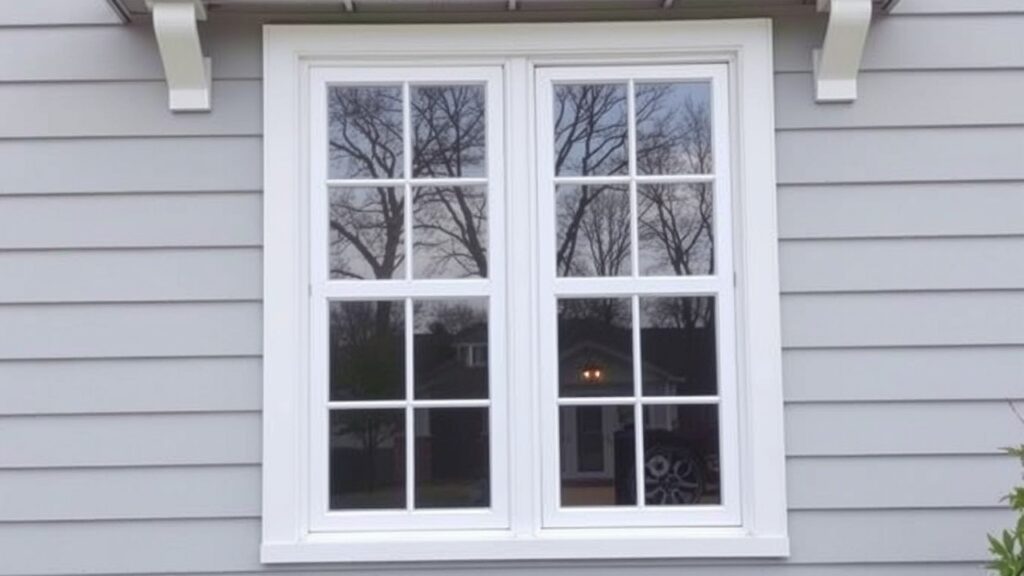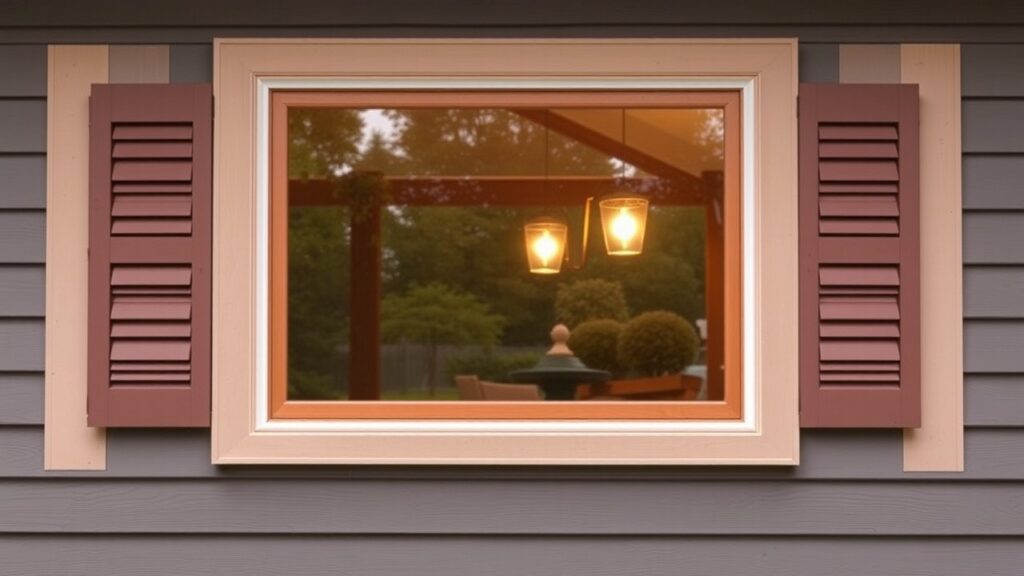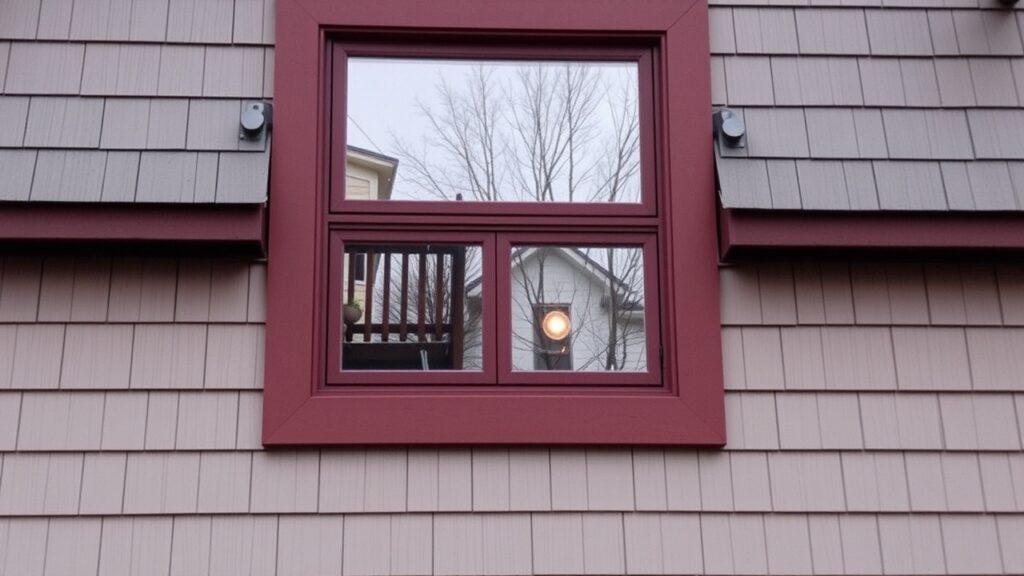Single and double hung windows are two of the most common types of windows found in residential and commercial buildings. These window styles have distinct features and characteristics that set them apart, and understanding the differences between single and double hung windows is crucial when it comes to selecting the right windows for a particular space.
Single hung windows feature a fixed upper sash and a lower sash that can be raised and lowered to allow for ventilation. In contrast, double hung windows have two operable sashes, both the upper and lower, that can be moved independently to control airflow. The choice between these two window types can have a significant impact on the overall functionality, energy efficiency, and aesthetics of a building.
Exploring the nuances between single and double-hung windows is essential for homeowners, architects, and contractors who are looking to make informed decisions about their window selections. By understanding the unique advantages and disadvantages of each type, individuals can ensure that the windows they choose align with their specific needs and preferences, ultimately enhancing the comfort, energy performance, and visual appeal of their living or working spaces.
Key Takeaways
- Single hung windows have a fixed top sash and a movable bottom sash, while double-hung windows have both sashes movable.
- Double hung windows offer more ventilation options and better air flow compared to single hung windows.
- Double hung windows are generally more energy efficient and provide better insulation than single hung windows.
- Maintenance and cleaning are easier with double-hung windows as both sashes can be tilted for easy access.
- When choosing between single and double hung windows, consider factors such as safety features, cost, and aesthetic preferences for your home.
Mechanism and Operation

The primary distinction between single and double hung windows lies in their mechanism and operation. Single-hung windows feature a fixed upper sash and a lower sash that can be raised and lowered to allow for ventilation. This design means that only the bottom sash is operable, while the top sash remains stationary. The lower sash is typically counterbalanced with weights or springs, making it easier to open and close.
In contrast, double hung windows have two operable sashes, both the upper and lower, that can be moved independently. This design allows for greater flexibility in controlling airflow, as both the top and bottom sashes can be opened to facilitate cross-ventilation. The sashes in a double hung window are also typically counterbalanced, making them easy to operate and adjust.
The number of sashes involved in each window type is a key differentiating factor. Single hung windows have a single operable sash, while double hung windows have two. This distinction can impact the overall functionality and usability of the windows, as well as their maintenance and cleaning requirements. Understanding the specific mechanism and operation of each window type is essential for homeowners and contractors when selecting the most appropriate option for their needs.
Ventilation and Air Flow

The design of single and double hung windows can have a significant impact on their ventilation capabilities and air flow within a room. Single hung windows, with their fixed upper sash, offer a more limited range of ventilation options. When the lower sash is opened, air can flow in and out of the window, but the fixed upper sash can restrict the overall airflow and circulation.
In contrast, double hung windows, with their two operable sashes, provide greater flexibility in controlling air flow. By opening both the upper and lower sashes, homeowners can create a more effective cross-ventilation pattern, allowing for better air circulation and improved indoor air quality. This can be particularly beneficial in warmer climates or during the summer months when natural ventilation is desired.
The ability to control the degree of ventilation can also have implications for energy efficiency. By adjusting the sashes to allow for optimal air flow, homeowners can potentially reduce their reliance on mechanical cooling systems, leading to lower energy consumption and utility costs. Understanding the ventilation capabilities of single and double hung windows is crucial when considering the overall comfort and energy performance of a living or working space.
Energy Efficiency and Insulation
The energy efficiency and insulation properties of single and double hung windows can vary, and these factors can have a significant impact on a building’s overall energy performance and utility costs.
Single hung windows, with their fixed upper sash, can be more susceptible to air leaks and drafts, which can compromise their insulation capabilities. The single operable sash can also create potential gaps or seams where air can escape, reducing the window’s overall thermal efficiency. However, advancements in window technology, such as the use of energy-efficient glazing and improved weatherstripping, have helped to mitigate these concerns and improve the energy efficiency of single hung windows.
Double hung windows, on the other hand, often have a slight advantage in terms of energy efficiency and insulation. The presence of two operable sashes can provide better sealing and reduce the potential for air leaks, particularly when both sashes are closed. Additionally, the ability to open both the upper and lower sashes can allow for improved natural ventilation, potentially reducing the need for mechanical cooling and heating systems, which can contribute to overall energy savings.
Factors such as the quality of the window materials, the type of glazing used, and the presence of energy-efficient features like low-E coatings or argon gas-filled spaces can all influence the energy efficiency and insulation properties of both single and double hung windows. Homeowners and contractors should carefully consider these factors when selecting the most appropriate window type for their specific needs and climate conditions.
Maintenance and Cleaning
| Aspect | Single Hung Windows | Double Hung Windows |
|---|---|---|
| Operation | Only the bottom sash moves. | Both the top and bottom sashes move |
| Cleaning | Harder to clean the outside of the top sash | Easier to clean both sashes from inside the house |
| Ventilation | Less flexible for controlling airflow | More flexible for controlling airflow |
| Cost | Generally less expensive | Generally more expensive |
The maintenance and cleaning requirements for single and double hung windows can vary, and this can be an important consideration for homeowners and building managers.
Single hung windows, with their fixed upper sash, can be generally easier to maintain and clean. The lower sash can be easily accessed and wiped down, and the fixed upper sash requires less frequent cleaning. Additionally, the single operable sash can make it simpler to replace or repair components, such as the counterbalance system or weatherstripping, if necessary.
In contrast, double hung windows, with their two operable sashes, can present some additional maintenance and cleaning challenges. Accessing and cleaning both the upper and lower sashes can be more time-consuming, and the presence of two moving parts can increase the potential for wear and tear over time. However, many modern double-hung windows are designed with features that can simplify the cleaning process, such as tilt-in or removable sashes.
Regardless of the window type, proper maintenance and regular cleaning are essential for ensuring the longevity and optimal performance of the windows. Homeowners and building managers should familiarize themselves with the specific maintenance requirements of their chosen window type and develop a routine cleaning schedule to maintain the windows’ appearance, functionality, and energy efficiency.
Aesthetic Considerations

The aesthetic appeal of single and double-hung windows can be an important factor for homeowners and designers when selecting the most appropriate window type for a particular building or architectural style.
Single-hung windows, with their fixed upper sash, can have a more traditional and classic appearance, often associated with historic or colonial-style homes. The clean, symmetrical lines and the uninterrupted view provided by the fixed upper sash can contribute to a timeless and elegant aesthetic. This window type can be well-suited for homes with a more formal or traditional design.
Double hung windows, on the other hand, can offer a more versatile and contemporary aesthetic. The presence of two operable sashes can create a more dynamic and visually intriguing appearance, particularly when both sashes are opened. This window type can complement a wide range of architectural styles, from traditional to modern, and can be a popular choice for homeowners seeking a more flexible and customizable design.
The choice between single and double hung windows can also have an impact on the overall visual balance and proportions of a building’s exterior. Factors such as the size, shape, and placement of the windows can influence the overall aesthetic and contribute to the cohesive design of the structure. Homeowners and designers should carefully consider the architectural style and design goals of a project when selecting the most appropriate window type.
Safety and Security Features
The safety and security features associated with single and double hung windows can be an important consideration for homeowners and building occupants.
Single hung windows, with their fixed upper sash, can offer a higher level of safety, particularly for households with young children. The inability to open the upper sash can help prevent accidental falls or unintended access to the window opening. Additionally, the single operable sash can make it more challenging for intruders to gain entry through the window, potentially enhancing the overall security of the building.
Double-hung windows, on the other hand, with their two operable sashes, can present some additional safety and security concerns. The ability to open both the upper and lower sashes can increase the risk of falls or unintended access, particularly for young children. However, many modern double-hung windows are designed with safety features, such as child-proof locks or sash limiters, to mitigate these risks.
In terms of security, the presence of two operable sashes in double hung windows can make it slightly easier for intruders to gain access, as they have more points of entry to potentially exploit. However, advancements in window technology, such as the use of reinforced frames, laminated glass, and advanced locking mechanisms, can help to enhance the security of double hung windows and provide a comparable level of protection to single hung windows.
Homeowners and building managers should carefully consider the safety and security needs of their specific living or working environment when selecting the most appropriate window type. Consulting with professionals, such as window installers or security experts, can help ensure that the chosen windows meet the necessary safety and security standards.
Cost Comparison
The cost of installing and maintaining single and double hung windows can vary, and this can be an important factor for homeowners and building owners when making their selection.
In general, single hung windows tend to be less expensive than double hung windows, both in terms of the initial purchase and installation costs. The simpler design and mechanism of single hung windows, with their fixed upper sash, can result in lower material and labor costs. Additionally, the maintenance and repair requirements for single hung windows are often less extensive, which can contribute to lower long-term ownership costs.
Double hung windows, on the other hand, can have a higher upfront cost due to their more complex design and the presence of two operable sashes. The additional components and mechanisms required for the upper sash can increase the overall material and installation expenses. However, the improved ventilation and energy efficiency capabilities of double hung windows may offset these higher initial costs over time, through potential energy savings and reduced utility bills.
Other factors that can influence the overall cost of single and double hung windows include the quality of the materials, the energy efficiency features, the size and dimensions of the windows, and the geographic location of the project. Homeowners and building owners should carefully research and compare the costs associated with each window type, taking into account both the initial investment and the long-term maintenance and energy-related expenses.
Choosing the Right Window Type for Your Home
When it comes to selecting the most appropriate window type for a home, there are several factors that homeowners and contractors should consider to ensure they make an informed decision.
The first step is to evaluate the specific needs and preferences of the homeowner or building occupants. Factors such as the desired level of ventilation, energy efficiency requirements, maintenance considerations, and aesthetic preferences should all be taken into account. For example, if maximizing natural ventilation is a priority, a double hung window may be the better choice, while a single hung window may be more suitable for homeowners who prioritize ease of maintenance.
The architectural style and design of the home should also be a key consideration. Single hung windows can complement more traditional or historic building styles, while double hung windows can offer a more versatile and contemporary aesthetic. Ensuring that the chosen window type aligns with the overall design goals of the project is crucial for achieving a cohesive and visually appealing result.
Additionally, the specific climate and environmental conditions of the location should be factored into the decision-making process. In regions with extreme temperatures or high humidity, the energy efficiency and insulation properties of the windows may be a more significant concern, potentially favoring one window type over the other.
Consulting with professionals, such as window installers, contractors, or energy efficiency experts, can also be valuable in the decision-making process. These individuals can provide guidance on the most suitable window type based on the unique requirements of the project, as well as offer insights into the long-term performance and cost considerations.
Ultimately, the choice between single and double hung windows will depend on the specific needs and preferences of the homeowner or building owner. By carefully weighing the various factors and considerations, they can make an informed decision that will enhance the functionality, energy efficiency, and overall aesthetic of their living or working space.
FAQs
What are single hung windows?
Single hung windows are windows that have a fixed top sash and a bottom sash that can be opened and closed vertically.
What are double hung windows?
Double hung windows are windows that have both the top and bottom sashes operable, allowing for both to be opened and closed vertically.
What are the differences between single and double hung windows?
The main difference between single and double hung windows is that in single hung windows, only the bottom sash is operable, while in double hung windows, both the top and bottom sashes are operable. This allows for better ventilation and easier cleaning in double hung windows.
Which type of window is more energy efficient?
Both single and double hung windows can be energy efficient, but double hung windows may offer better ventilation control, which can help with energy efficiency. Additionally, double hung windows may be easier to seal tightly when closed, reducing air leakage.
Which type of window is easier to clean?
Double hung windows are generally easier to clean because both sashes can be tilted inwards, allowing for easier access to the exterior glass surfaces. Single hung windows typically require cleaning from the outside.
Which type of window is more common in homes?
Both single and double hung windows are common in homes, but double hung windows are often preferred for their versatility and ease of use.










